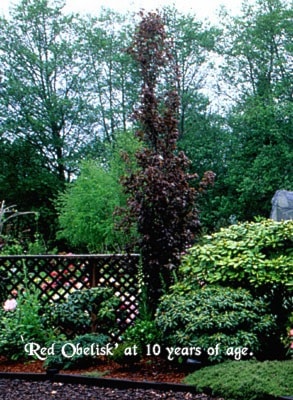Smaller spaces, both for living and gardening, are today’s reality. Unfortunately many folks simply give up gardening and resign themselves to a small bit of grass or ground cover and the odd tree or shrub as their green space. I see this every day, and it is such a shame.
Small spaces outdoors should be considered no differently than small spaces indoors. Today, more remodeling dollars are being spent on the ‘outdoor room’ than any other room in the home! The nesting trend has moved outside, and it now includes family and friends. It is the place folks want to be.
Many design elements can be used to create magical outdoor spaces. From water and screen plants to architectural statues and vines, there are so many opportunities to create quite remarkable outdoor living areas. One element, however, that is too often overlooked is the vertical effect. If we can’t go out, we can most certainly go up! When I think of vertical plants, I think of the southern Italian countryside with its tall, narrow Italian cypress - they create magic by themselves! A vertical element, used appropriately in small areas, creates a unique dynamic. It provides a visual lift – optically, it expands a smaller area in a new direction. The more narrow the feature, the greater the effect. Tall, thin trees provide privacy, and they transfer eye focus in a very discreet way.
There are some amazing plants that pull off this vertical effect very nicely and are not used nearly enough in our small or even larger landscapes. One of my favourites is the tall, narrow Japanese flowering cherry, Prunus serrulata ‘Amanogawa’ (zone 5). It has soft pink, semi-double, slightly perfumed flowers and grows from five to seven meters tall and only one to two meters wide. I love the way it flowers from bottom to top for the most delightful effect. It’s quite a clean tree, free of most pests, and has beautiful fall colours. It also looks magnificent in winter with great erect vertical branches. There is now a more compact form on dwarf Giesela rootstock, making it even suitable for containers.
Another favourite is the narrow form of the quaking aspen, Populus tremuloides ‘Erecta’ (zone 1). Its tiny round leaves with slender compressed petioles cause the leaves to tremble with even the slightest air movement. The look and sound of this tree makes it invaluable. Its fall colour is brilliant yellow. In winter it provides attractive long grey catkins, and its grey-white bark looks great. This narrow Swedish aspen grows seven to ten meters tall and two meters wide and performs best in very well drained soil.
The narrow growing forms of beech have really found their place in smaller modern landscapes. Fagus sylvatica ‘Dawyckii’ (zone 6) and F.s. ‘Red Obelisk’ (zone 6) are two of my favourites. Growing anywhere from five to nine meters tall, these trees have intricately woven branches that wrap about the main stem for a beautiful winter look. The tiny green leaves on ‘Dawyckii’ turn a stunning hot lime-yellow in late spring and summer to become quite a sensation. ‘Red Obelisk’ has traditional purple beech foliage that provides beautiful contrasts to the many greens out there.
The hornbeam, Carpinus fastigata, (zone 6) grows into a narrow pyramid shape, reaching anywhere from six to ten meters tall. Its ribbed leaves are a dark green, creating a very appealing look. It has attractive upright branches in winter and with a little side pruning, can be kept quite narrow.
For a bit of red-burgundy colour in the landscape, the more narrow growing sport of ‘Crimson King’, Acer platanoides ‘Crimson Sentry’ (zone 4) is a great plant. Its branching creates an upright shape, and its leaves are very closely spaced for quite a dense appearance. It’s ideal for small planting areas and excellent for screening.
I’m a big fan of the eastern red maple, Acer rubrum, for wow red fall colouring, and Acer rubrum ‘Bowhall’ (zone 3) is one of the more superior narrow growing maples. It has tight branching, is a very clean tree and when October hits, its leaves turn a fabulous brilliant red that lasts well into fall.
Oak trees are sentimental favourites, and now we have a great one for small spaces. Quercus alba robur ‘Crimson Spire’ (zone 5) is a spectacular very narrow growing spire, with dark bluish-green traditional oak leaves that transform into stunning red colours in the fall. It has a great winter look as well.
Any of these columnar trees are well suited to smaller gardens and can help transform their look and feel into great living spaces. They can be used with other architectural features, but even by themselves, they will make a tremendous difference.
